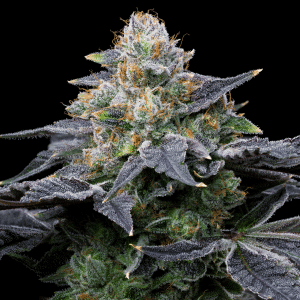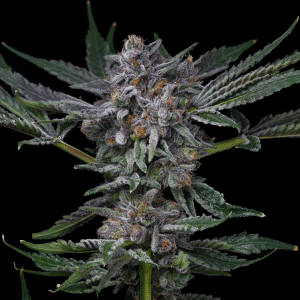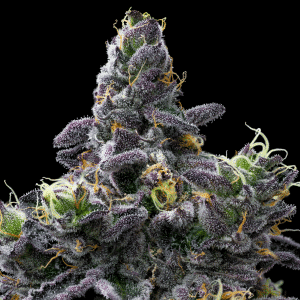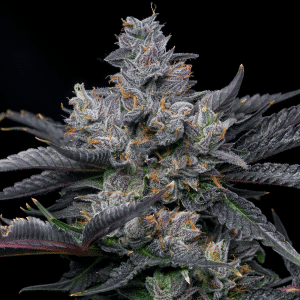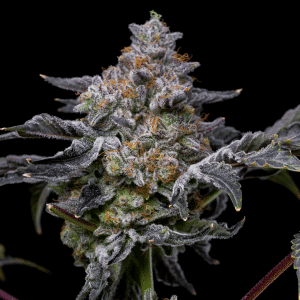Germination is the onset of your cannabis plant’s life cycle, and getting it correctly sets your crop up for healthy growth and a plentiful yield. As a result, while germinating marijuana seeds, it’s important to comprehend all of the variables involved. Here is everything you require to know about cannabis germination and seedling care.
Choosing the Right Cannabis Seeds for Germination
When deciding to produce cannabis, it all begins with the appropriate seed. The seed you select will eventually determine the size of the plant, the length of its life cycle, the crops you will harvest, and the effects you will experience. Hence, it is important to select the proper seeds.
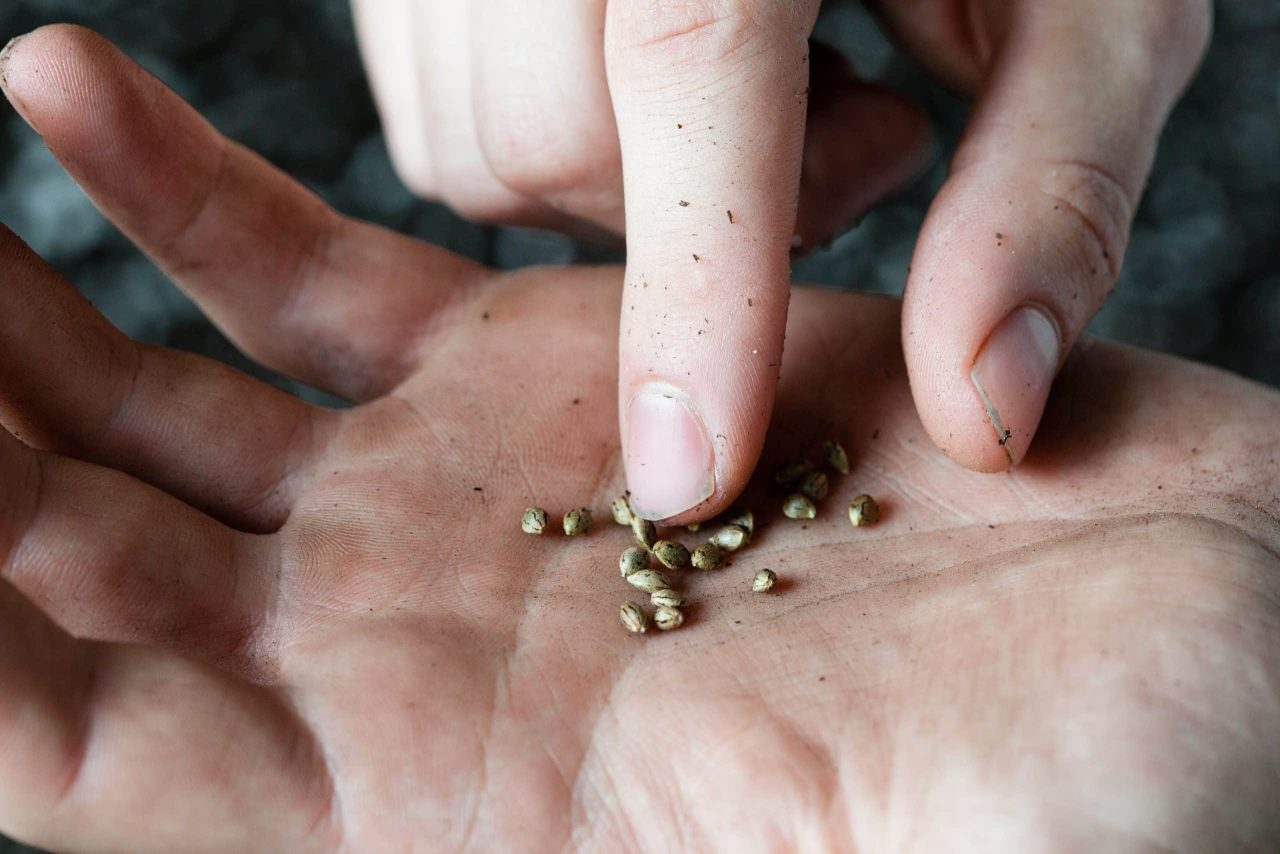
Here are all of the elements to consider when choosing which cannabis seeds to plant:
- Seed bank or firm: The first step is deciding where to obtain marijuana seeds. You can acquire high-quality seeds online or from local seed banks. Depending on market demand or your preferences, you may choose between Sativa and Indica; your dealer will give you a selection of strains. However, you need to purchase feminized marijuana seeds because female plants are superior at generating the huge buds and large numbers that weed growers prefer.
- The type of seed: Another crucial decision you’ll have to make is which variety or type of seed to grow. Regular, feminized, or autoflowering varieties will dictate how your growing process begins and progresses. Each has unique characteristics important to know and consider when acquiring cannabis seeds.
- Price: One of the most important elements in any purchase, including cannabis seeds. Luckily, with marijuana seeds, depending on the breeder, strain, or variety, you can select a seed that fits your budget. However, make sure you get from a respected firm, like Premium Cultivars, so you don’t end up with low-quality cannabis seeds to save money. Your seed’s quality determines your plant’s quality; therefore, stick with reputable sellers regardless of the price you can afford.
- Sativa, Indica, or Hybrid: The choice of Indica, Sativa, or Hybrid strains will also have an impact on overall growth, size, and shape. This differentiation will also determine the effects of your cannabis once it is consumed. Cannabis Sativa plants will become tall and slender. They take longer to mature than Indica. Sativa plants also produce higher yields than Indica ones. Conversely, Indica plants are shorter, bushier, and produce fewer buds than sativa plants. You can develop hybrid plants that combine the characteristics of Sativa and Indica strains. Hybrids are strong with one genetic – Indica or Sativa – but generate effects from both types.
- Grow difficulty: Some plants develop easily, while others demand more attention to provide the greatest outcome. Cannabis is no different. Certain seeds or strains require less upkeep and are more hardy, while others can be picky and require specialized nutrition or training procedures to grow. When selecting a seed type from your breeder, be sure to consider the complexity of growth based on your growing ability.
- Taste and smell options: Most users have preferences for how their weed should smell and taste. Every strain produces different fragrances and aromas based on the terpenes it contains, and they can even change somewhat after curing. Whether you enjoy typical diesel odors, lemon, skunky, fruity, or sweet, selecting a strain that matches your preferences is perfect. Keep in mind that some cannabis strains will be more intense as they grow. So, if you want to make your growing operation discreet or stealthy, avoid strains with an extremely strong aroma.
- Plant height: When choosing seeds, consider your plant’s final height. If you’re growing inside, your weed plant’s ceiling space will most likely be limited. Choose a seed that meets these requirements to achieve maximum yields and optimal growth. While you may assume the “sky’s the limit” outside, it can be for some, but if you have pesky neighbors, you may want to be extra mindful of the final plant’s height as well. Some marijuana seeds and species can reach 6 feet, which is far greater than the size of a fence that may be blocking the view.
- Anticipated yields: If you prioritize ‘quantity’ over anything else, you should examine the seed’s estimated yield. No matter how much care and upkeep you give a plant, certain strains will only produce so much bloom and substance. This is determined by the plant’s overall form and size and the size of its buds and nodes. Double-check the predicted yields and see which strain produces the most material at harvest time to guarantee you’re getting the most out of your cultivation.
The Perfect Environment for Germinating Your Cannabis Seeds
There are different methods to germinate seeds, such as using paper towels, peat pellets, or directly in soil. Depending on the strain and the quality of the seeds, germination can take anywhere from 24 hours to a week. Once the seeds have cracked and the taproot has emerged, you can carefully transplant them into their final growing medium and start the vegetative growth stage. However, no matter which method you choose, there are some general guidelines to follow to ensure a successful germination:
- The ideal temperature for cannabis germination is between 21°C and 27°C. You can use a heating mat, a thermostat, or a warm place to maintain a consistent temperature.
- The seeds need to be in a moist but not wet environment. Too much water can cause the weed seeds to rot or drown. You may utilize a spray bottle to mist your seeds or the medium they are in and cover them with a plastic dome or a lid to retain humidity.
- The seeds also need oxygen to germinate. Make sure the medium you use is not too compact or dense and has enough air pockets for the roots to breathe. You can also poke holes in the plastic cover to allow air circulation.
- The seeds do not need light to germinate but will need it as soon as they sprout. You may use fluorescent, LED lights or natural sunlight to give the seedlings enough light to grow. Avoid using high-intensity lights that can burn the delicate seedlings.
Step-by-Step Guide to Germinating Cannabis Seeds
The paper towel technique of germinating marijuana seeds is popular among home gardeners for a variety of reasons. It is less expensive and requires only a few household things to get started, such as a paper towel or cotton pad. Cannabis seeds thrive on paper towels because they are kept covered and wet. Some claim that cotton pads are better suited to this procedure since they retain moisture better. Affordable and non-porous paper towels will also do. Cannabis seeds typically germinate in 24-72 hours if kept in a warm, moist environment. Here’s an easy guide on using paper towels to germinate cannabis seeds.

- Choose materials: First, you will need top-notch weed seeds, filtered water, tweezers, paper towels, and a dinner plate.
- Moisten paper towels: Place paper towels in water. Then, wrung out the towels to remove any extra water.
- Place a paper towel on the plate: Lay one of the kitchen paper towels on the dinner dish and keep the other one nearby for later use.
- Put seeds on the towel: Take the weed seeds and set them on the paper towel on top of the dish. Leave about an inch between each weed seed.
- Place a second towel on top. Place the second paper towel on top of the seeds. Add more water to keep everything moist, but make sure it’s not too wet.
- Check for extra water: Lift the paper towels to see whether there is any standing water on the plate below.
- Put the setup away: Store it in a drawer or cabinet. Any other warm, dark place will do.
- Leave the seeds for 20-120 hours, keeping them moist and never allowing them to dry. Check the weed seeds regularly.
- Plant your seeds: When your cannabis seeds form a taproot, they are ready to be planted.
Common Mistakes to Avoid in Cannabis Seed Germination
No matter which technique you use to germinate your marijuana seeds, there are some mistakes you should strive to avoid. Most of these errors are frequent among beginning growers. As a result, if this is your first time cultivating cannabis, you should pay close attention to the following:
- Watering too much or too little: The cannabis seeds need a balance of moisture and oxygen to germinate. If the seeds are soaked or drowned, they will stagnate and rot. Conversely, if the seeds are too dry, they will wilt and die. The germination medium should be moist but not saturated.
- Burying the cannabis seeds too deep: The seeds should be about one centimeter from the surface of the germination medium. If the marijuana seeds are too deep, they will have a hard time breaking through the soil and reaching the light. To guarantee the correct planting depth, gently push the seeds into the earth with your fingertips. Avoid pressing them too deeply since this might lead to problems. It’s also worth noting that various strains or seed types may require somewhat varying planting depths, so always follow the exact directions supplied by the seed seller.
- Covering the seeds too tightly: The seeds need some air circulation and ventilation to germinate. If the seeds are covered too tightly, they will suffocate and develop fungi. The seeds should be protected but not sealed.
- Providing too much or too little light: The weed seeds need some light to germinate, but not too much. Too much light can dry out the seeds and cause them to overheat. Too little light can cause the seedlings to stretch and become weak. The seeds should also be exposed to a gentle and indirect light source.
- Fertilizing the seeds too early: The seeds do not need any nutrients to germinate. They have enough stored energy in their endosperm. If the seeds are fertilized too early, they will burn and die. The seeds should be given nutrients only after they have developed their first true leaves.
- Transplanting the seedlings too late or too early: The seedlings need to be transplanted to a larger pot or the ground when they have developed a strong root system. If the seedlings are transplanted too late, they will become root-bound and stunted. If the seedlings are transplanted too early, they will suffer from transplant shock and stress. The cannabis seedlings should be transplanted when they have 2-4 sets of true leaves.
Role of Water, Heat, and Light in Successful Germination
Aside from the tools used to germinate your weed seeds, the growing environment you give will be quite important. Your seeds require the proper temperature and moisture levels to grow into a robust, healthy plant.
Water
Watering is necessary throughout the cannabis life cycle, including germination. If you don’t have enough water, your seeds will not germinate; if you have too much, the root won’t survive. Excess water prevents oxygen from reaching the plant’s roots and attracts mold, so be careful not to overdo it. When germinating marijuana seeds indoors in soil or another growing medium, the water levels are rather straightforward to monitor. Water your seed until you see water pouring from underneath (but not more). Even though the seedling cannot take much water, it will evaporate fast, so make sure there is always enough available. Watering it until it reaches this point will provide enough moisture for a few days.
Lighting
Lighting, like water, is vital for cannabis plants. Light enables a mature plant to produce sugars from carbon dioxide and water. The cannabis plant then uses those sugars to power its growth, also known as photosynthesis. Lighting is also vital for cannabis seeds because it provides heat, which is required for the seed to open its shell and send its roots into the ground. Fluorescent lights are the most effective technique to provide the necessary temperature for your seeds. Fluorescent lights are great since they are low-power and produce less heat.
You can position them as near to a young cannabis plant as you need, and while your seed does not require it at this time, it will after the first leaves emerge from the top of the soil. Incandescent lamps can also be used because they are excellent heat producers. They cannot be used as grow lights, although they are perfectly adequate for germination purposes. Also, you can use a seedling heating pad. These heat the seeds from below rather than above. However, they will not be sufficient if your plant begins to grow.
Temperature
Temperature management is critical for effective cannabis seed germination and growth. Cannabis seeds prefer slightly warmer temperatures than many other plants. The recommended temperature range for growing cannabis seeds is 70-85 degrees Fahrenheit (21-29 degrees Celsius). Once the seeds have sprouted and the plants begin to grow, it is advisable to keep the temperature slightly lower. Outdoor seeds germinate best in warm, humid conditions comparable to spring. To create a humid climate, wrap plastic over your pot to form a biodome for your plants. Remember to remove the plastic wrap when you notice any sprouts emerging from the soil.
Advanced Techniques for Higher Germination Success Rates
There are several techniques that can improve the germination success rates of seeds, such as:
- Seed priming: This is a process of soaking seeds in water or a solution of nutrients, hormones, or chemicals for a certain period, then drying them back to their original moisture content. This enhances the metabolic activities of seeds, reduces the time and variability of germination, and improves seedling vigor and stress tolerance.
- Biopriming: This is a type of seed priming that involves the use of beneficial microorganisms, such as bacteria, fungi, or algae, to coat or inoculate the seeds. This can improve seed health, protect the seeds from pathogens, enhance nutrient uptake, and stimulate plant growth and yield.
- Seed coating: This is a process of applying a layer of material, such as polymers, fertilizers, pesticides, or biostimulants, to the surface of seeds. This can improve the seed appearance, handling, storage, and sowing, as well as provide protection, nutrition, and stimulation to the seeds and seedlings.
- Magnetic seed stimulation: This is a process of exposing seeds to a magnetic field for a certain duration and intensity. This can increase the water uptake, enzyme activity, respiration rate, and germination rate of seeds and improve the seedling growth, yield, and quality.
Transitioning from Germination to Seedling Stage
The cannabis seedling stage is the second stage of the cannabis growth cycle after germination. It lasts for about 2-3 weeks, during which the sprouted seed develops into a small plant with several sets of leaves.

To transition from germination to the seedling stage, you need to:
- Pick the right genetics, pots, and grow medium for your seedlings. For autoflowering seeds, plant them directly in their final pots to avoid transplanting stress. For feminized seeds, start with small pots and transplant them later when they outgrow their containers. Use a light, well-aerated, slightly acidic soil with perlite to improve drainage and nutrient retention.
- Use the right germination techniques. You can germinate your seeds with a damp paper towel, a cup of water, or an Easy Start kit. Once your cannabis seed sprouts a root and two cotyledons (seed leaves), place it in the growing medium. Also, ensure the root points downwards and the cotyledons are above the soil surface.
- Master the seedling stage. Provide 18 hours of light per day for indoor plants and at least 6 hours of direct sunlight for outdoor plants (though you could even give them 12 hours of light and 12 of darkness daily). Keep the temperature between 20-25°C and the humidity around 65-70%. Water your seedlings only when the soil is dry, and avoid overwatering or underwatering. Do not feed your seedlings any nutrients until they have 3-4 sets of true leaves, as they are very sensitive to nutrient burn. Prevent pests, diseases, and environmental stress by keeping your grow area clean and well-ventilated.
Essential Care Tips for Young Cannabis Seedlings
Once your seeds germinate, you’ll be the proud owner of cannabis seedlings. While the seedling phase is likely one of the most difficult parts of the cannabis growth cycle, there are a few things you can do to make this time as smooth as possible, including:
- Correct lighting: Cannabis seedlings grow under CFL lighting. Hang a CFL bulb 15cm above the tops of your seedlings to support healthy early growth without burning or straining them.
- Good-quality medium: Cannabis seedlings like well-aerated, wet conditions that encourage the growth of their roots. If you’re new to cultivating weeds, experts recommend starting with soil before attempting more sophisticated soilless arrangements.
- Misting: Seedlings have extremely sensitive root systems that are easily drowned. In the early phases of the seedling phase, sprinkling your plants and dirt with a spray bottle may be preferable rather than trying to water them with a stream.
- Watering: Once your weed seedlings are a little stronger, water them in a circle about 3cm from their stem. This will stimulate their roots to spread towards the edges of their pots, resulting in a robust, healthy root system.
- Feeding: When grown on soil, cannabis seedlings often do not require feeding for two weeks. When growing on coco, you could start feeding your plants after 1-2 weeks, whereas inert media may require earlier feeding.
Nutrition and Watering: Mansions of Healthy Cannabis Seedlings
How to water your cannabis seedlings
The frequency with which you water your cannabis seedlings is determined by several factors. The best way to ensure your seedlings’ health is by placing them in a high-quality, well-aerated grow medium. You’ll have to grow them in well-draining pots (fabric pots or Air-Pots work best) and, if possible, beneath regular CFL lights suspended 25-45cm (9-18″) from the top of your pots. The kind of grow lights you use, the size of your pots, the precise composition of the soil, and the temperature and relative humidity in your grow room or garden will all impact how frequently you water. Just recall that knowing when and how much water to give each seedling takes time and skill.
How to feed your cannabis seedlings
Cannabis seedlings are extremely sensitive and will readily “burn” in nutrient-rich soil. In general, experts do not advocate feeding during the seedling stage. Instead, maintain your seedlings in their Easy Start pots until they can be transferred and begin gardening. Most forums and blogs will tell you that your weed plants are ready to veg after two weeks, but this is far from the truth; it typically takes 3 to 4 weeks from germination for your seedling to utilize up all of the energy stored in the seed, though some plants develop faster than others. However, experts recommend transplanting and vegging your seedlings once they have at least three nodes and true leaves of 4-5 sets rather than relying on time.
Addressing Common Problems in Cannabis Seedling Growth
Cannabis seedlings are delicate and sensitive to environmental conditions, watering, nutrients, and diseases. Some of the common problems that can affect cannabis seedlings are:
- Seeds not germinating: This can happen if the seeds are too old, too wet, too dry, or exposed to extreme temperatures. To increase the chances of germination, soak your seeds in water for 30 minutes, use fresh and moist soil, and keep the temperature around 25°C.
- Seedlings dying after sprouting: This is also known as damping off, and it is caused by fungal infections that attack the stem and roots of the seedlings. To prevent this, use clean and sterile equipment, avoid overwatering, and provide good ventilation and water from the bottom of the seedlings.
- Seed shell stuck on the seedling: This can happen if the seed coat does not fall off after the seedling emerges from the soil. This can prevent the seedling from developing properly and cause deformities or death. To remove the seed shell, gently spray the seedling with water and use tweezers to peel off the shell carefully.
- Stunted growth: This can occur if the seedlings are not getting enough light, nutrients, water, or space. To promote healthy growth, use low-intensity and blue-spectrum lights, provide a balanced and mild fertilizer, water regularly but not excessively, and transplant the seedlings to bigger pots when they have 3-4 sets of leaves.
- Mold in seed trays: Mold and mildew are two prevalent cannabis cultivation difficulties, as well as cannabis seedling problems. The fungus is rarely the sole cause of dying taproots; rather, it is a symptom of more serious issues. Mold commonly forms on seedlings when they are overwatered, overcrowded, or have poor air circulation. To completely avoid mold, provide an appropriate setting from the start.
- Bugs fly about seedlings: If you’ve previously produced marijuana, you’ve probably dealt with cannabis pests. Cannabis fungus gnats lay eggs in the soil and, if left neglected, can cause seedling issues. Place yellow sticky traps around your seedlings to eliminate as many pests as possible. Most will adhere to the tape, allowing your seedlings to thrive again.
Indoor vs. Outdoor Seedling Care: What’s the Difference?
Depending on the type of plant, the climate, and the available space, seedlings can be grown either indoors or outdoors. Here are some of the main differences between indoor and outdoor seedling care:
Light
Indoor seedlings need artificial light sources, such as fluorescent lamps or LED lights, to provide enough light for photosynthesis. However, outdoor seedlings can benefit from natural sunlight, which is more intense and has a wider spectrum of wavelengths. Outdoor seedlings may also need protection from harsh weather, such as frost, wind, or excessive heat.
Water
Indoor seedlings need regular watering, as the soil in pots or trays can dry out quickly. The amount and frequency of watering depend on the size of the container, the type of soil, and the humidity level. Outdoor seedlings may need less watering, as the soil in the ground can retain more moisture. However, outdoor seedlings may also need irrigation during dry spells or droughts.
Nutrients
Indoor seedlings need fertilizer to provide essential nutrients for growth, such as nitrogen, phosphorus, and potassium. The type and amount of fertilizer depend on the growth stage, plant type, and soil quality. Outdoor seedlings can benefit from the natural nutrients in the soil, such as organic matter, minerals, and microorganisms. However, outdoor seedlings may also need amendments to improve the soil structure, pH, or drainage.
Temperature
Indoor seedlings need a controlled temperature range, usually between 18°C and 24°C, to prevent stress or damage. The temperature can be adjusted by using heaters, fans, or thermostats. Outdoor seedlings need to adapt to the natural temperature fluctuations, which can vary widely depending on the season, the time of day, and the location. Outdoor seedlings may need acclimatization before transplanting to avoid shock or wilting.
Monitoring Cannabis Seedling Health for Top Quality Plants
To grow healthy cannabis seedlings, it is important to monitor their growth and take care of them. The seedling stage lasts 1 to 3 weeks and requires specific environmental conditions for optimal growth. Here are some tips to help you grow healthy cannabis seedlings:
- Environmental conditions: Seedlings thrive in warm temperatures around 72-79°F (22-26°C) with relative humidity levels around 60-65%. They also require low light intensity, which can be provided by dimmed LED lights or fluorescent low-wattage lights.
- Watering and pot size: Overwatering or underwatering can cause problems with seedling growth. It is important to water the seedlings only when the soil is dry and to use pots that are appropriate for the size of the seedlings.
- Damping-off: This is a fungal disease that can affect seedlings. It is important to use clean soil and pots to prevent damping-off, avoid overwatering, and provide good air circulation.
- Nutrients: Seedlings do not require extra nutrients during the seedling stage. Their nutrient needs will increase as they grow bigger and stronger.
- Temperature and light: Seedlings require warm temperatures and low light intensity. They should be placed near the light source and moved up as the plants grow.
- Transplanting: Seedlings should be transplanted when they have outgrown their pots. It is vital to transplant them carefully to avoid damaging the plant’s roots.
Organic Practices for Strengthening Cannabis Seedlings
Organic cannabis cultivation is a natural way to grow and enjoy cannabis without using synthetic chemicals or harming the environment. Here are some of the organic practices you can use to strengthen your cannabis seedlings:
- Use organic seeds or clones: The quality of your cannabis plants starts with the quality of your seeds or clones. Make sure to source them from reputable organic breeders or dispensaries that can guarantee their genetics and health.
- Use natural soil or growing medium: The soil or growing medium you use for your seedlings should be rich in organic matter, well-drained, and slightly acidic (pH 6.3–6.5). You can use compost, worm castings, peat moss, coco coir, perlite, or vermiculite to create your own organic soil mix.
- Use natural fertilizers: Cannabis seedlings are very sensitive to nutrients and can easily burn in nutrient-rich soil. Avoid using chemical fertilizers and instead opt for natural organic fertilizers such as guano, kelp, fish emulsion, or compost tea. These fertilizers provide essential macronutrients and micronutrients, as well as beneficial microbes, to your seedlings.
- Use natural pest control: Cannabis seedlings are vulnerable to pests and diseases, like fungus gnats, aphids, spider mites, and damping-off. To prevent these problems, you can use natural pest control methods, including neem oil, diatomaceous earth, garlic spray, or predatory insects. These techniques are safe for your weed plants and the environment and do not leave any harmful residues on your buds.
Cannabis Seedling Care: The Role of Proper Lighting
Proper lighting is essential for cannabis seedling care, as it affects the growth, health, and potency of your plants. Here are some key points to consider when choosing and using lights for your seedlings:
- Light requirements: Cannabis seedlings have modest light requirements. Excessive light or heat can easily damage their new, delicate leaf tissue.
- Light intensity: PPFD light levels of around 100-300 µmol/m²/s are usually used for cannabis seedlings.
- Light schedule: When growing autoflowering cannabis seeds indoors, most growers use a light cycle with 20 hours of daily light. This may be used from seed to harvest. Some cannabis growers also use an 18/6 or a 24/0 light cycle. When growing feminized seeds indoors, growers use anything from 18 to 24 hours of daily light for the first month or two of the plant’s life.
- Light distance: If you’re growing inside, the seedlings can be placed under artificial light as soon as they’ve sprouted from the soil. The distance will vary depending on wattage. For instance, keep the seedlings at least 50 cm from the bulb if you’re using HID lighting. If using a compact fluorescent lamp, the distance should be about 15 cm; with normal fluorescent tubes, the distance should be reduced to just a few centimeters. If you use LED lights, the distance should be about 30 cm.
Understanding the Impact of Climate on Cannabis Seed Growth
Climate is one of the most important factors that affect cannabis seed growth, as it determines the temperature, rainfall, sunlight, and humidity levels that the seeds are exposed to. Different cannabis strains have different preferences and tolerances for these climatic conditions, and choosing the right strain for your climate can make a big difference in your germination and yield success. However, climate change is altering these optimal conditions in many regions of the world and posing new challenges and opportunities for cannabis growers.
Growing Pains: How to Troubleshoot Your Cannabis Seedlings
Troubleshooting your cannabis seedlings can be a challenging task, as many factors can affect their health and development. However, with some knowledge and observation, you can identify and solve most of the common seedling problems that may arise. Here are some steps you can follow to troubleshoot your cannabis seedlings:
- Check the symptoms: The first step is to look for any signs of stress, damage, or disease in your seedlings. Some of the symptoms you may encounter are yellowing, curling, wilting, or dropping leaves, stunted growth, stem rot, or mold. You can also purchase a magnifying glass or a microscope to inspect your seedlings more closely and look for any pests, bugs, or fungal spores.
- Identify the cause: The next step is to find out what is causing the problem. Some possible causes are overwatering, underwatering, nutrient burn, nutrient deficiency, heat stress, light burn, pests, diseases, or genetic issues. You can use a pH meter, a moisture meter, a thermometer, or a light meter to measure the conditions of your growing environment and compare them with the optimal ranges for your strain. You can also use online guides, books, or forums to help you diagnose the problem based on the symptoms and the type of seedling you have.
- Apply the solution: The final step is to apply the correct solution to fix the problem and prevent it from happening again. Some of the solutions are adjusting the watering frequency, the nutrient dosage, the temperature, the light intensity, or the humidity, using natural or organic pest control methods, applying fungicides or bactericides, or removing the affected seedlings.
Cannabis Seed Germination: The Dos and Don’ts
Cannabis seed germination is an important step for successful cannabis cultivation, as it determines the quality and quantity of your harvest. Here are some of the dos and don’ts of cannabis seed germination:
- Do keep your cannabis seeds dry, as moisture can trigger germination prematurely or cause rot and mold.
- Don’t let them get too warm; high temperatures can damage the seeds and reduce their viability.
- Do choose a suitable germination method, such as a paper towel, glass of water, peat pellets, or direct soil planting. Each method has its pros and cons, so you should research them carefully and find the one that works best for you.
- Don’t over-soak your seeds, as this can drown them or make them susceptible to fungal infections. Hard weed seeds should be soaked for a maximum of 32 hours, although 24 hours is usually enough.
- Do provide air, water, and heat to your seeds, as these are the three essential factors for germination. The optimum temperature is between 22° and 25°C (71–77°F), and the seeds should be kept moist but not wet.
- Don’t touch or disturb your seeds once they start to germinate, as this can damage the delicate taproot or shock the seedling. Handle them carefully and use tweezers or gloves if you need to transplant them.



